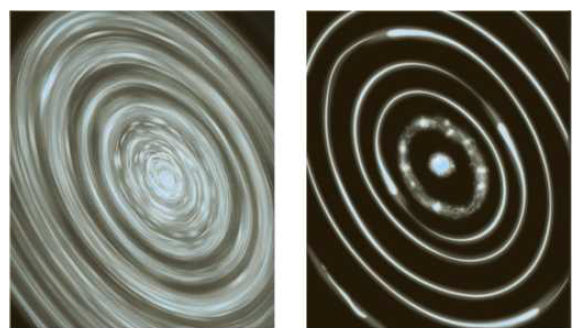A model of solar system formation is that the Sun condensed from a disk of gas and
Question:
A model of solar system formation is that the Sun condensed from a disk of gas and dust through mutual gravitational attraction (Fig. P9.65). Consider a uniform disk of gas and dust that starts with the mass of the Sun and has a radius equal to that of Pluto?s mean orbital radius. The theory is that this disk had an initial tiny rotation (T = 250,000 years) and collapsed to the size of the Sun. (The mass of all planets and other objects in the solar system add up to less than 0.2% of the mass of the Sun.)
(a) Assuming we can ignore the mass of the planets (all the mass in the disk collapses to the solid spherical Sun), what period of rotation for the Sun is predicted by conservation of angular momentum??
(b) This model turns out to be faulty; the Sun rotates about once in every 27 days. Repeat your conservation of angular momentum calculation, this time including the angular momentum of Jupiter and Saturn at their appropriate orbital radii. What is the new predicted period of rotation for the Sun??
(c) Explain why planets with such (relatively) small masses can have angular momenta that are significant fractions of the angular momentum of the Sun.
Figure P9.65
?
Step by Step Answer:

College Physics Reasoning and Relationships
ISBN: 978-0840058195
2nd edition
Authors: Nicholas Giordano





